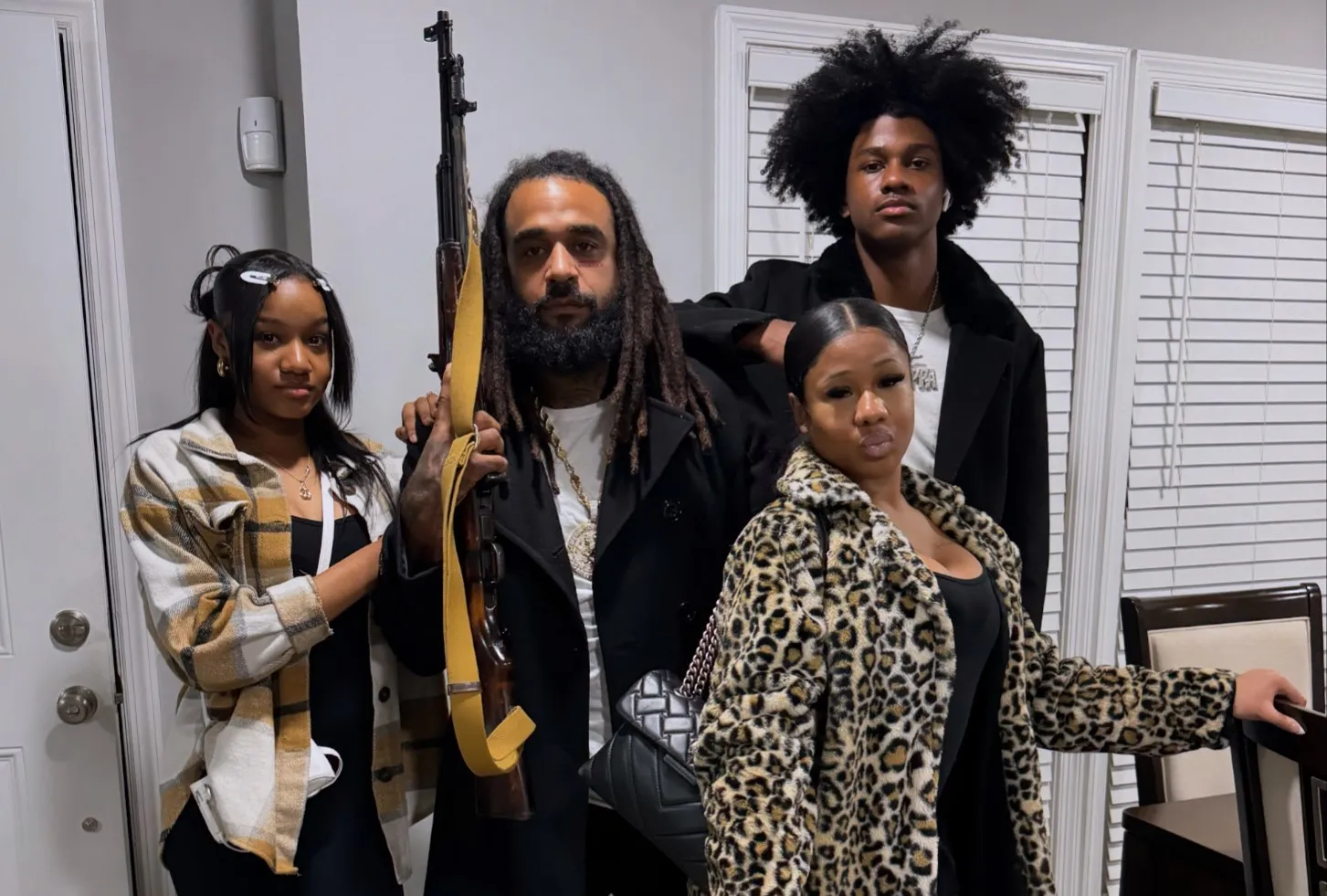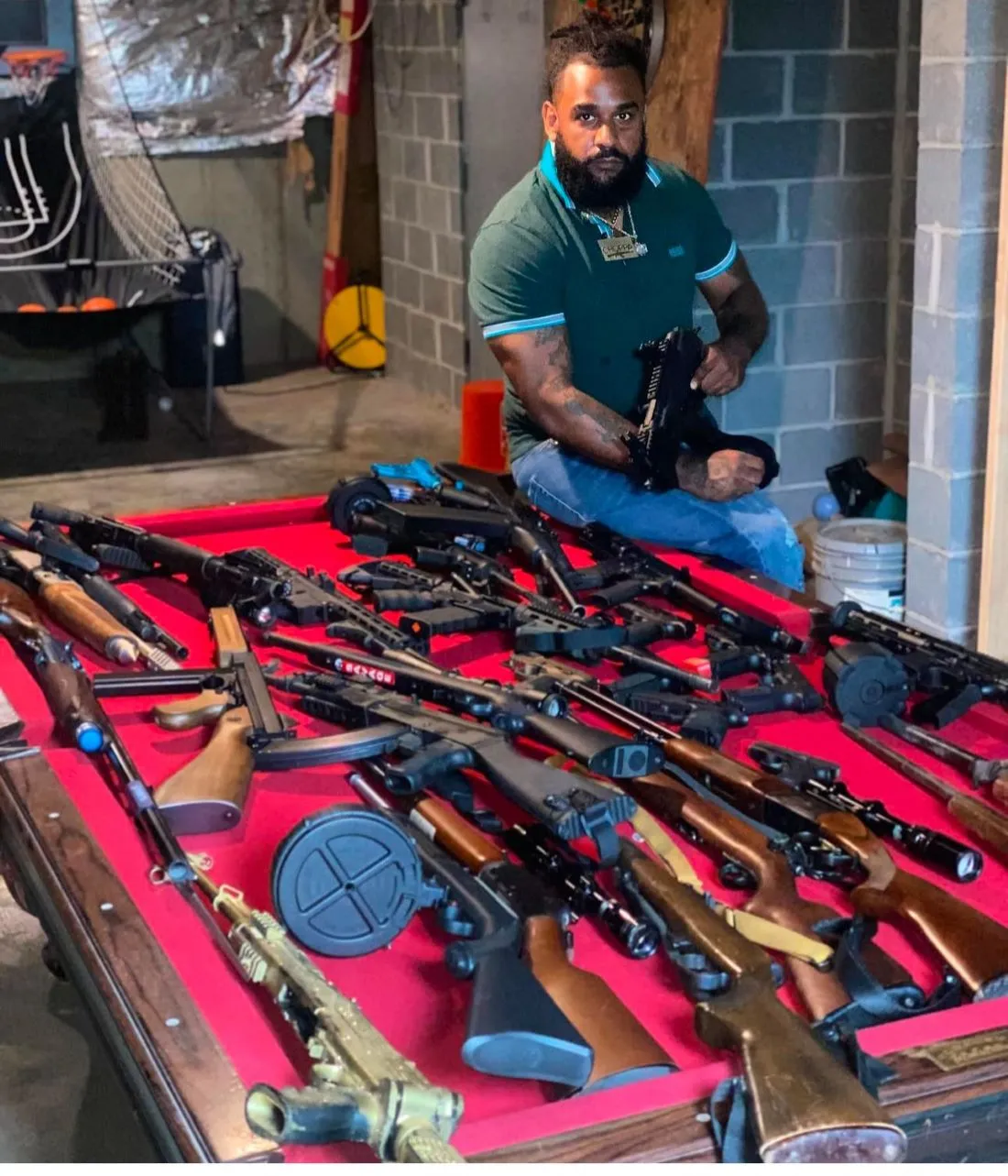
by Lee Williams
Mark “Choppa” Manley is a gun owner, a gun collector and a Second Amendment advocate who has more than 70 legally owned firearms stored in a gun safe at his Baltimore home.
All of his firearms comply with both federal law and the laws of Maryland. He is always very careful about that.
Manley works as an intervention specialist for his local school district. His day begins early and ends late, usually around 7 p.m., because he also coaches girls’ flag football.
Manley and his wife, who did not want her first name used in this story, get up early for their jobs. For them, November 21st began just like any other workday.
“The morning of the raid started just like any other morning,” Manley told the Second Amendment Foundation’s Investigative Journalism Project.
“My wife went downstairs around 4:30 a.m. to make coffee,” he said. “I was sitting on the side of the bed, getting myself together.”
“Mark, there’s someone outside the house!” his wife yelled. She saw people moving around in their front yard.
Manley grabbed a handgun and looked out the window. He could see ATF agents making “tactical movements” all over his front yard.
“I could see agents crouching down with long guns,” he told SAF.
Manley checked his home security system’s monitor and saw more agents taking tactical positions in his backyard. He put down his pistol and quickly woke his two daughters, but not his 15-year-old son who was sleeping in the basement.
“I looked out the window again and could tell they were going to bust down our door,” Manley said. “I yelled ‘Hello! We are up here.’ All of a sudden, a bomb went off. My wife screamed. She followed right behind me on our way out, but she was disoriented. She was in pure shock.”
As the family walked out through their front door, they saw dozens of heavily armed ATF agents.
“I got my arms up and I’m walking down the steps. When I got to the bottom I turned around and saw that the agents had rifles pointed at my daughters,” Manley said. “I have young kids. They had guns pointed at my children. It was a pretty emotional moment for me. I was about to lose control. I yelled ‘You have guns on my f—ing children!’ They lowered their weapons.”
Manely and his 17-year-old daughter were each handcuffed. His wife and children were moved to the rear of a SWAT van. It was 20-degrees outside, and they were only wearing pajamas.
“I would like you to take the handcuffs off my daughter,” Manley’s wife told the ATF agents. “Why did you handcuff my husband? He complied with everything you asked for.”
The family then overheard ATF agents talking about their 15-year-old son, who was flash-banged in his basement bedroom.
“My son loves the basement,” Manley said. “He has his own place, but they busted down his door, threw a grenade and 14 agents ran into his room, guns drawn and threatening to shoot him. He was woken by surprise. They busted down the glass door to his room and had guns drawn. We were relieved to see him when they brought him out.”
“They brought our son out as we were ready to get back inside the house,” Manley’s wife said. “It was a half-hour later.”
Manley started thinking about his neighbors. He and his family had only moved into their home three months ago. Their neighborhood is predominantly white.
“For us to be the only black family on the block — the ATF just assumed they would find something in our home,” his wife said.
Next, the ATF agents brought police canines and their handlers into the home.
“The dogs ransacked our house,” Manley said. “They defecated everywhere — even on my daughter’s bed. This was completely uncalled for.”
Meanwhile, Manley said a host of ATF agents “ransacked” his home.
“They threatened to blow up my gun safe,” Manley said. “I don’t have anything to hide, so I told them I’d open the safe. They uncuffed me and told me ‘Don’t try to run.’ Where was I gonna run to? My family was right there.”
Manley unlocked his gun safe and slowly swung open the door.
“They were all standing around waiting and hoping,” he said “This was their moment, they thought. They started pulling out rifles and shotguns, but everything was registered and Maryland-compliant. ‘We got nothing here,’ one of them said.”
One ATF agent, who had told Manley’s wife he was the lead investigator, asked her later via a phone text for dimensions and other information about the doors and windows his team had destroyed, which he promised to replace.
“I didn’t want to talk to them,” she said. “I didn’t reply. They had just waged war on us.”
Aftermath
The Manley family was never told, at least officially, why they were mistakenly targeted by the ATF.
“I have done nothing illegal. I don’t sell guns. I don’t own any machineguns,” Manley said.
“The search warrant said he is a felon,” Mrs. Manley said. “It said he is a felon in possession of firearms.”
“I don’t have any felony record,” Manley said.
Their home was terribly damaged in the raid. It needs new floors in the living room and in their son’s bedroom because of the flash-bang grenades, and their front and rear doors still remain shattered. The police canine feces the family cleaned up themselves.
The agents asked Manley why “someone would make up stuff about you?”
“Are you kidding me?” Manley said. “I made it out of the inner city and poverty. People who are still there know me and envy what I’ve become. I do all of the giving back, but there is still hate and jealousy. Someone must have gotten caught with something and said, ‘Mark’s got all kinds of guns.’ To this day we just don’t know. Someone must have gotten caught and said some lies. It was all too easy for them to kick down my doors.”
Manley and his family have started a Go Fund Me page, which so far has raised more than $18,000. They are also speaking with several attorneys.
Neither Toni M. Crosby, the Special Agent in Charge of ATF’s Baltimore Field Division, nor Katherine Rottman, the office’s Public Information Officer, returned calls or emails Thursday afternoon.
“Thank you for contacting the ATF Baltimore Field Division. This inbox is not actively monitored but we are in receipt of your email and a member of our team will follow up with you,” an email reply states.
Said Manley: “Would this happen if I was white? Probably, but I feel like more of a target because I am black, but I don’t want to. I was targeted because I am such a strong supporter of the Second Amendment. I am heavily armed. I’m a black man, but me being a black man doesn’t help my case. They put me in the worst position as the man of the house. It was all just horrific, man.”




